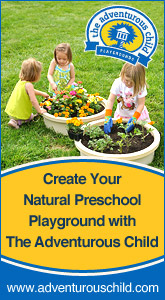Voices of Children in Design Process
R. Buckminster Fuller
Every issue of Exchange includes a section called "Wonder" with insights from members of the World Forum's Nature Action Collaborative for Children. The March 2013 issue included this observation from Toni and Robin Christie from the Childspace Institute in Wellington, New Zealand:
"As early childhood teachers ourselves, we have always felt that the experiences and ideas of the teaching team are vital to the design process as they ‘know the space best.’ But do they really? Have adults ever crawled under the fern bushes at the bottom of the fence, or squeezed between the twisted branches of the trees behind the shed? Do they know how the mud next to the rabbit hutch crackles in a good frost? ...
"Children interact with their environment in unique and constantly changing ways that reflect the sum total of their experiences up to that point. Since their theories of how the world works are evolving on a daily basis, and they have a very different sense of physical scale, it is extremely difficult to know exactly how they view their learning environment. So how do we ensure their voices are heard in the design process?
"...We will often start in the same way as we might at a parent meeting by opening their minds to what a playscape can look like through field trips, photos, and videos of playspaces from the local area and around the world. The notion that a playground is merely a slide, some swings, and a whole lot of safety matting is still pervasive in New Zealand society. The idea that we must move beyond that to include play elements that foster whole-person development is a vital message that children seem to understand more quickly than adults!
"...Then we’ll get out lots of paper and pens and sit in the middle of the playground and just draw while we talk. Now, it’s important to note at this point that the drawings we make are simply a means to an end. As designers, what we’re really doing is listening. The conversations about play that emerge when children’s brains are relaxed and ‘distracted’ by the drawing process are where the real gold lies. While they might be drawing pirate ships with water slides, they are speaking of running and rolling, planting and harvesting, hiding, whispering, camping around the fire, being a rock star on the stage, and building a treehouse for the birds. As we listen, common threads begin to emerge about what is and is not successful in the space.
"While this is only one of the techniques that we use (in combination with careful observation of the children’s play), we find that it engages children in a way that empowers them to offer ideas in an accepting atmosphere over the entire length of the design and build process. Trust the children enough to ask for their opinions. After all, they know the space best!"
For more information about Exchange's magazine, books, and other products pertaining to ECE, go to www.ccie.com.
|
© 2005 Child Care Information Exchange - All Rights Reserved | Contact Us | Return to Site


